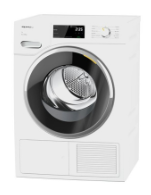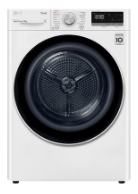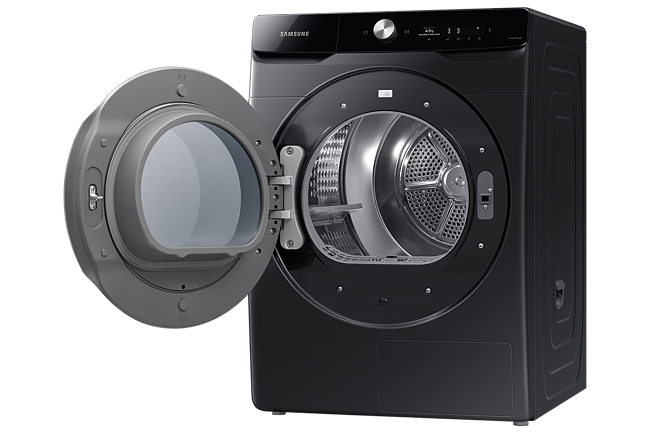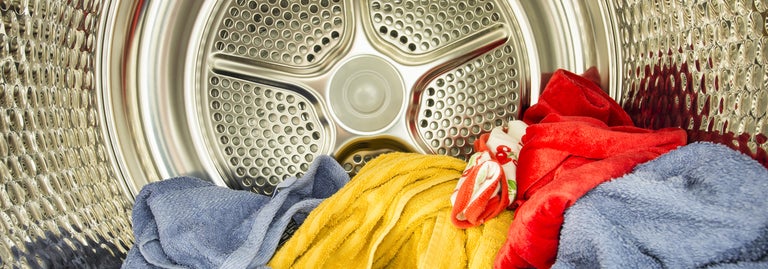The cost of running household appliances quickly adds up. If you’re looking to save money, or reduce your carbon footprint, taking into account the energy usage of your appliances is crucial, as the energy efficiency of your appliances can play a big role in the ongoing electricity costs of your home. For example, clothes dryers with a low energy rating can cost around 5x more per load than more energy-efficient clothes dryers.
So if you’re in the hunt for a new dryer, it pays to consider just how energy efficient it is.
What do you mean by energy efficient?
Appliances in New Zealand are given an energy star rating out of six. The more stars an appliance is awarded, the more energy efficient it is considered. Meaning, it sucks up less power when in use. Some models that are considered to be extremely energy efficient qualify for extra stars, up to a total of ten. This is considered a super-efficiency rating, and many energy-efficient clothes dryers in the market now qualify for one of these ratings.
A dryer with high energy efficiency will not only save you money, but will help reduce the carbon footprint of your machine.
Things to consider before you buy
There are three main types of clothes dryers available: ventilated, condenser and heat pump.
Ventilated dryers
These dryers take air from a room, heat it to dry clothes and then expel it once it has become too moist. Because these dryers release hot, moist air, they’re not appropriate for cramped, internal spaces, such as closet laundries, which are common in apartments. They require appropriate ventilation or ducts. Usually the cheapest to buy, they’re not very energy efficient.
Condenser dryer
Condenser dryers recycle hot air by extracting the water vapour from it, before sending the air back through the clothes in the dryer. The extracted moisture is drained away, so no moist air is expelled from the dryer. Because of this, they are more appropriate for tight spaces. However, these dryers are typically too heavy to be wall-mounted. Although, they can be stacked on top of a front loader. Again, these dryers are not energy-efficient, typically ranging from just 2-3.5 stars.
Heat pump dryer
Heat pump dryers work in a closed loop. Air is heated and pushed through the clothes before it is then cooled. The water drains off during the cooling process. The cool air is then reheated and sent back into the clothes. Heat pump dryers are typically the most expensive options, but they are by far the most energy-efficient clothes dryers. They can be wall-mounted and used in tight spaces.

The most energy-efficient clothes dryers
To help you in your hunt for a new dryer, we’ve listed some of the most energy-efficient dryers currently available, in order of lowest annual running costs. As mentioned above, heat pump dryers are considerably more energy-efficient, so all the dryers mentioned below (except where stated) are heat pump dryers.
Annual running costs are estimated on the assumption of one load per week, and have been sourced via Gen Less’ Rightware tool. Prices correct at time of writing (29/08/23), and intended only as a guide.
1. Miele TWF720WP ($3399)
- Annual running costs: $24
- Heat-pump dryer
- Energy star rating: 10-star super efficiency rating
- Load capacity: 8kg
2. Bosch WTX88M20AU ($2699)
- Annual running costs: $25
- Heat-pump dryer
- Energy star rating: 10-star super efficiency rating
- Load capacity: 8kg
3. Fisher & Paykel DH9060FS1 ($2799)
- Annual running costs: $26
- Heat-pump dryer
- Energy star rating: 10-star super efficiency rating
- Load capacity: 9kg
4. Fisher & Paykel DH9060HG1 ($6599)
- Annual running costs: $27
- Heat-pump dryer
- Energy star rating: 10-star super efficiency rating
- Load capacity: 9kg
5. Fisher & Paykel DH9060HL1 ($6499)
- Annual running costs: $27
- Heat-pump dryer
- Energy star rating: 10-star super efficiency rating
- Load capacity: 9kg
6. Miele TWR780WP ($5399)
- Annual running costs: $27
- Heat-pump dryer
- Energy star rating: 10-star super efficiency rating
- Load capacity: 9kg

The most energy-efficient dryers: budget
LG DVH5-08W ($1349)
- Annual running costs: $29
- Heat-pump dryer
- Energy star rating: 9-star super efficiency rating
- Load capacity: 8kg
Samsung DV80TA420DE ($1497)
- Annual running costs: $29
- Heat-pump dryer
- Energy star rating: 9-star super efficiency rating
- Load capacity: 8kg
The most energy-efficient clothes dryers, ventilated and condenser (super budget)
If you are looking for a cheap clothes dryer, ventilated or condenser dryers are an option. While none on the market offer the same energy efficiency as heat pump dryers (none earn a super energy-efficiency rating, for example) the initial costs can be much more affordable:
Midea MFN03D70/WW ($899)
- Annual running costs: $42
- Energy star rating: 2.5
- Load capacity: 4kg
Beko ($1039)
- Annual running costs: $42
- Energy star rating: 2.5
- Load capacity: 4kg
The most energy-efficient clothes dryers: large load capacity

While clothes dryers don’t handle the same size loads as washing machines, you can still find dryers large enough for most household jobs.
The largest load capacity on the market you tend to find is 10kgs, which is big enough for a family load of washing.
Samsung DV10B9750CV ($2938)
- Annual running costs: $31
- Heat-pump dryer
- Energy star rating: 10-star super efficiency rating
- Load capacity: 10kg
How can I lower the energy use of my clothes dryer?
There are plenty of little tips and tricks to help limit the amount of power used by your clothes dryer. A few to try are:
- Avoid having it on standby, turn it off at the wall
- Avoid drying loads of laundry that are too small or too large. Too small and it’s wasteful, too large and clothes won’t ventilate and dry efficiently. The warm air needs to move through the clothes
- Use dryer balls to speed up dry time. Dryer balls absorb moisture while also tumbling through the dryer, separating clothes and improving ventilation through the washing
- Switch loads while the dryer is still warm
- Dry heavyweight items separately. The dryer will continue to run until the heaviest items are dry, meaning any small items included will dry longer than necessary
- Use features, such as a cool-down cycle, which finishes drying with the remaining heated air left in the dryer
- If your electricity plan offers off-peak rates, run your dryer at times when electricity is cheaper
- Don’t use a dryer at all. Use an outdoor line, if possible, or an indoor clothes horse to dry your laundry for free!
Finding the best power provider
While energy-efficient appliances are a great way to save you money, you also need to be getting a good deal on your power. While less than half of Kiwis believe they are getting a good deal on their power, only 12% of us have actually changed our electricity provider in the last 12-months.
Ultimately, finding affordable power involves shopping around. And the fact that you’re reading this means that you’re already on the right track to finding a great deal on power. But when comparing power companies, it’s important to consider the broader picture – don’t become too focused on finding a deal with a big prompt payment discount or special perk. Be sure to balance all the rates, discounts, fees and contract periods when making a decision, as well as more personal factors, such as customer service and support.
Compare with Canstar Blue
To help you find the best value electricity retailer, Canstar Blue rates NZ power companies for customer satisfaction and value for money, see the table below for some of the results, or you can click on the button below for the full results of our survey.
Canstar Blue’s latest review of NZ power companies compares them on customer satisfaction. The table below is an abridged version of our full results, available here.
^ By clicking on a brand or 'details' button, you will leave Canstar Blue and be taken to either a product provider website or a Canstar Blue NZ brand page. You agree that Canstar Blue NZ’s terms and conditions apply (without limitation) to your use of this service,to any referral to a product provider from our website, and any transaction that follows. Canstar Blue may earn a fee for referrals from its website tables, and from sponsorship (advertising) of certain products. Payment of sponsorship fees does not influence the star rating that Canstar Blue awards to a sponsored product. Fees payable by product providers for referrals and sponsorship may vary between providers, website position, and revenue model. Sponsorship fees may be higher than referral fees. Sponsored products are clearly disclosed as such on website pages. They may appear in a number of areas of the website such as in comparison tables, on hub pages and in articles. Sponsored products may be displayed in a fixed position in a table, regardless of the product’s rating, price or other attributes. The table position of a sponsored product does not indicate any ranking, rating or endorsement by Canstar Blue. See How we are funded for further details.
Canstar Blue NZ Research finalised in April 2023, published in June 2023.
See Our Ratings Methodology
Compare electricity providers for free with Canstar Blue!
About the author of this page
This report was written by Canstar Content Producer, Caitlin Bingham. Caitlin is an experienced writer whose passion for creativity led her to study communication and journalism. She began her career freelancing as a content writer, before joining the Canstar team.
Enjoy reading this article?
You can like us on Facebook and get social, or sign up to receive more news like this straight to your inbox.
By subscribing you agree to the Canstar Privacy Policy



Share this article